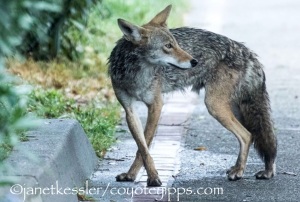The classical seasons involve a Spring, Summer, Fall and Winter. Each season has very definite characteristics that we all become familiar with when we are children, even though they don’t quite fit the reality of where we live. Some places really don’t fit the mold at all. One of these places is the Bay Area of California.
In the Bay Area our seasons might be defined as being more subtle by those used to the classical seasons. However, in many ways, our seasonal changes offer contrasts that are stark.
Summers here are often the coldest part of the year due to the heavy summer fog: cold air brought down along the coast from Alaska hits the hot arid air further inland, and the result is fog. Many of us love the natural “air conditioning” when further in from the coast the temperatures are sweltering. However, the fog can be relentless: this summer we had only three full days of sunshine. In addition, our summers are dry: ours is actually a desert climate. Many of the grasses that define the landscape dry out and become dormant in the summer — some would say brown, some would say golden!! Not only the grasses, but trees as well become more dry and more sparse in their growth — this is in summertime!
Animal life also goes through its changes throughout the year. I’m specifically referring to voles, one of the prime food sources for coyotes. Voles are intriguing because some populations regularly go through cycles of low to high numbers with occasional, sudden increases that can send numbers soaring up to several thousand per acre. The vole population during this past summer was noted by everyone as being profuse in some of the parks. Through the end of the summer one would see these little critters — many of them — darting across open trails, or just sitting at the opening to their burrows, sometimes in twos and threes. We all wondered why there were so many of them when there never had been this many before. One theory is that the exceptionally good rains in the springtime had increased their food supply. My friend Jeff has a theory: he thinks that since more of them are being eaten by owls, hawks, raccoons and coyotes, they have compensated by over-reproducing themselves. These are speculations by observers who frequent the park, we don’t really know the reason, but without evidence that can be found in other sources, it is fun to think about the possibilities.
Now, summer is over. The rains began at the end of October, and already, within a few days of them, the terrain is again covered with tiny green sprouts poking themselves up out of the ground which had been barren and dry for so long and in so many places. Our winter and spring are the greenest because that is the rainy season. In some places the rains have caused severe flooding, not only because there are huge rainstorms, but also because the ground is much too dry to absorb any water at all, so the rain sits on top and then flows high.
More about voles. Voles do not hibernate and they are not nocturnal. Rather, they are active at all times with periodic rest periods interspersed. A vole colony can number in the hundreds: one vole seen above ground means there are many more underground. Winter apparently is a time when they work extra hard on their tunnels. The size of the tunnel system varies with the type of habitat and food supply and population — it can be as expansive as a few hundred square feet, with many openings that measure about an inch and a half in diameter. Voles themselves, without their short tails, measure about three to four inches long when full grown.
The tunnels include nests for their young which are lined with grass, moss and feathers. Voles are extremely prolific, with females maturing in 35 to 40 days and having 5 to 10 litters per year, averaging four to six vole babies — but only two or possibly three of these survive to weaning. Although they can breed at any time of the year, birthing usually occurs from March through June. Voles seem to die off early, at about 2 months of age; some live to be about a year and one half years old, but never two years old.
Vole numbers fluctuate from year to year, increasing rapidly under favorable conditions. In some areas their numbers are cyclical, peaking every 3 to 6 years before dropping back to low levels.
Voles eat vegetation, roots, grass, bark, seeds. They have been known to eat snails and insects, these perhaps as unintended side effects of the way they collect their food. They will eat roots they run into as they dig, or they may pull plants into their burrows from below.












































































































